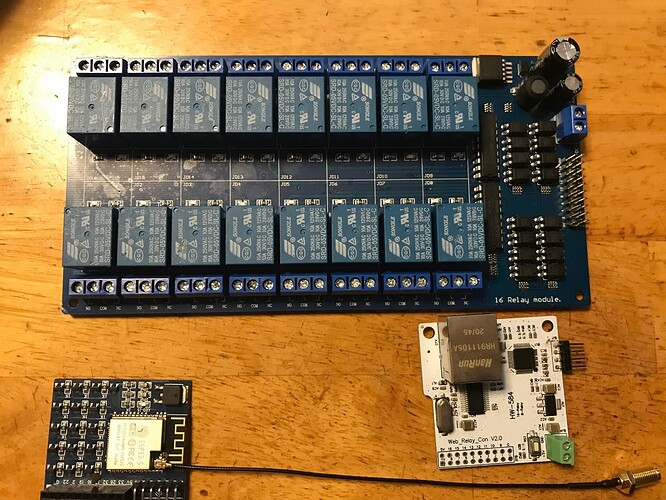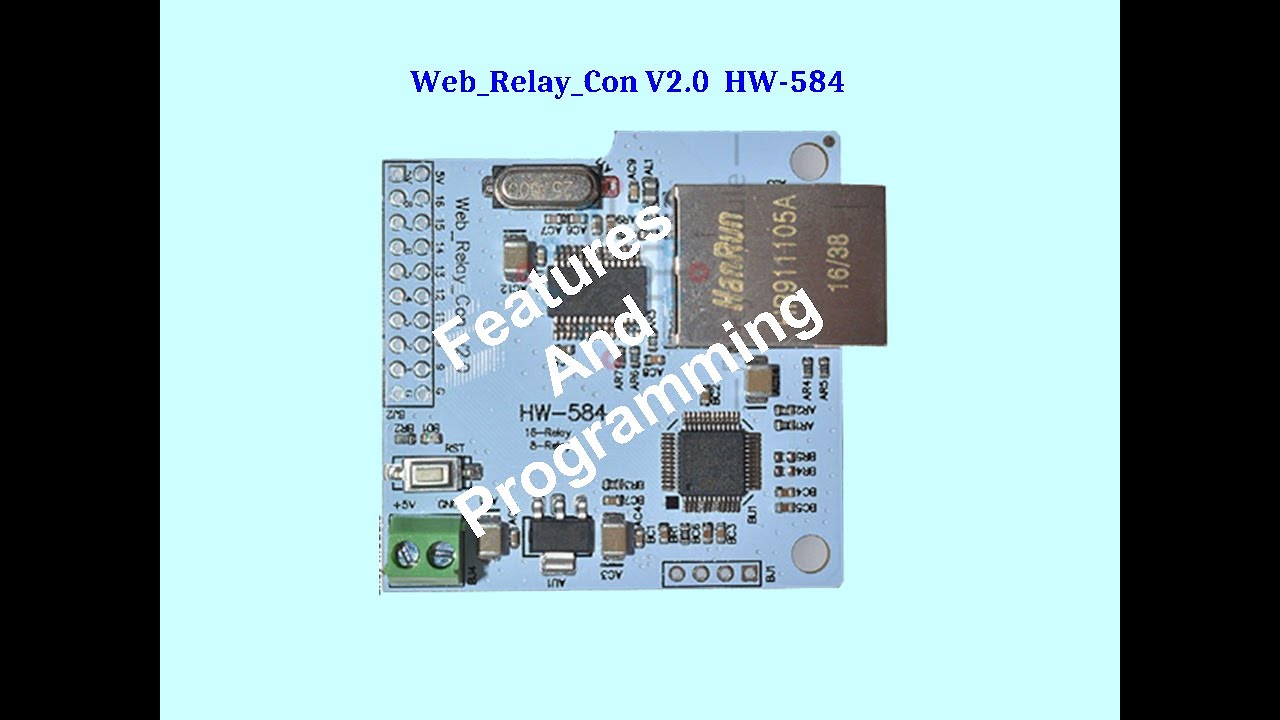I know a lot of you have some pretty far remotes that hardly see a human.
This may be for you if you have not managed methods to this point.
I have been using remote control through asterisk for more than a decade and at the point where I was expanding and wanted to update everything to what is more commonly available and on the cheap if allowed. I like my controls to be the same every location and have extras in case of failure.
So I thought I would outline what I decided and implemented on if it helps others in need.
I found it easier to use something network based for simplification of control not necessarily where the server was, even though I was controlling them from the servers. I could also issue direct command on the web by port/routing them.
On the top you will see a 16 relay board
I believe I paid about $15us ea on ebay for them. I think it can be found on Amazon as well.
Hardly worth my time to buy individual relays and ‘build’, even if I only need 3 relays.
This board is 5vdc and you might want 2-2.5 amp supply if you think you might use all 16 at once.
The relays can handle a 10 amp load so they can do serious work. But I think I would use something heavier if past 7 amp continuous.
Now to control the relays…
The board on the left is a updated wireless ESP32-s with a itx external ant connection that can be connected to your nearby wireless router for network connection. (I show it connected to a rpSMA pigtail)
Find the board by searching for WIFI MODULE ESP32 RELAY DRIVER
All the work on this module was done by Tasmota and the instruction for this is on their web.
The board will plug directly into the relay board without any wiring except for 5vdc power to the relay board.
This can be programmed with a simple serial FTDI FT232 device at 5v with only power rx & tx lines (must be swapped rx>tx & tx>rx to device set at 5vdc and write enable pins jumpered)
See their web for all the goop Tasmota Documentation - Tasmota
Apply the relay template you get from here
MTools 16 Channel ESP32 Relay Driver 5V DC Module Configuration for Tasmota
The board on bottom right is hard wired Ethernet.
Labeled HW 584 and note you will absolutely need the ‘version 2’
Find the board by searching for ENC28J60 relay module on ebay
This board will need it’s default firmware changed. It’s terrible as I found.
While I was considering tackling that myself, I found I didn’t need to. Someone else already did.
You may need to do some soldering here for pin headers and note that the pins do not perfectly align with the relay board for relay ‘number’. But the power and ground are the same 5vdc on the far pins at each end. I think if you remove the power connector on the network board, it will mount-up but the relay number and pin numbers will by off in order. But I did not try this. Wires are OK.
Trying to keep things the same and simple.
Instruction on this board is here-
how2 video from author (watch it all before you start as there is one part misordered)
For programming this, you will also need a similar device, STM32 also available on ebay for about $10 or less. I had a hunch I could use something else but did not want to chance it.
I might also point out that the author of the firmware revision also included readable inputs and Dallas 18B20 digital temperature units as well. So, you can script actions if you read the inputs periodically.
Now if you decide on one of these or both and you want a dialplan and shell scripts for control within asterisk/app_rpt/allstar let me know. Simple ‘cmd relay# on/off’
But with scripting, you can sequence timed multiple events with a command of its own.
I am still working on some of the input checking/scripting for asterisk for my locations.
I am hoping to help a few of you through so you get it and can help others do the same.
Hopefully we can solve common questions right here if you have any.
It’s a nice control set-up for at or under $50
I am using one setup (of 8) to start a diesel welder/generator sequencing the ignition glow plugs and starter when my solar controller says my batteries are low. Just one idea of use if you use your imagination. All made better with the app_rpt/asterisk interface.
You can also do a hard reset of power to your remote allstar node as long as you have internet.
Control fans based on temperature and know the status of your stuff online or by a query command.
All dependent on your needs and how you program it.
A word of caution… do not control sensitive items if your app_rpt/asterisk interface is not stable running.
Where there is a need… there is control !


